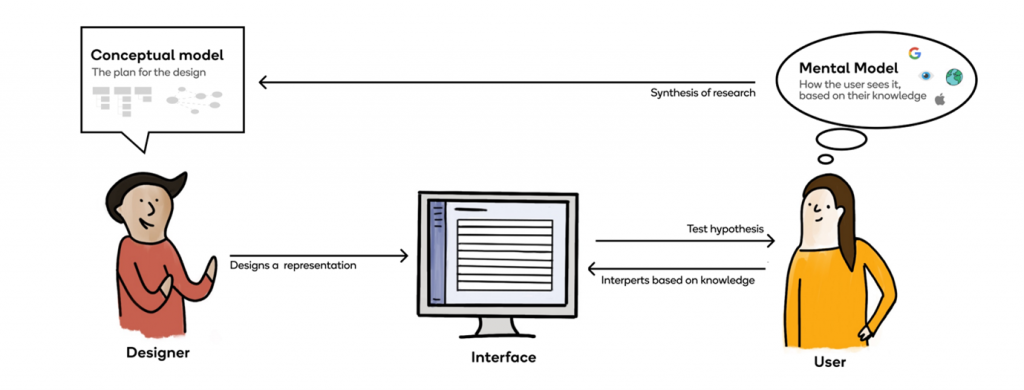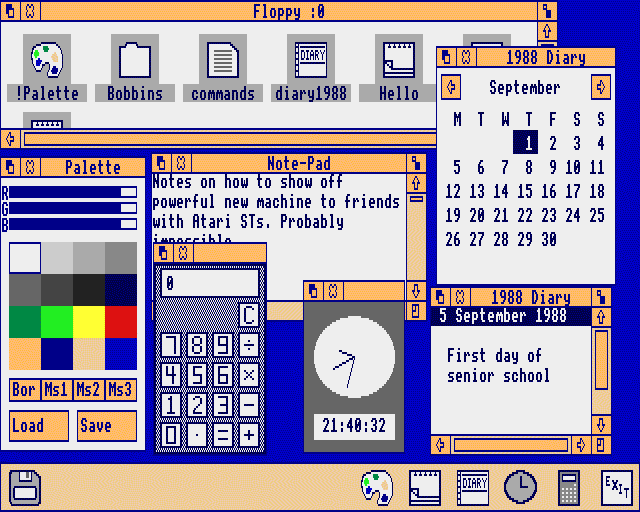Mental and conceptual models
Do you know the difference between a user’s mental and conceptual models? And if you do, do you know how to use that to your advantage? UX designers do. In fact, it’s one of the many tools they have in their toolbox to make your digital product or service user-friendly.
Mental vs conceptual
We all use mental models in our everyday life. They are essential to understand things and explain to others how they work. Our mental models are based on what we know about the world from past experiences and from what others have told us. They are different from conceptual models, which are the models we create by thinking about something in a rational, organized and structured way. In short: conceptual models are blueprints for how we intend something to work, mental models are how we think something will work.

These mental models are so elementary that we are hardly conscious of them. Mental models play a vital role in UX and design because they relate to how users perceive how a system works based on belief instead of factual concepts.
As UX Designers, we can create products or solutions to simulate these models and make them more usable and intuitive. User personas help us to understand the users we are designing for, to put ourselves in their shoes and better understand their context.
When we look at understanding how several unique users solve complex problems, mental models provide us with a bigger picture of the decision-making process – through their perceptions.
How do people form these mental models?
We already touched on it briefly in the introduction, but let’s dive a little deeper here. Mental models develop in the brain to cognitively map life situations, leading to assumptions about future-like situations.
Senge (1990) viewed mental models as our understanding of how the world operates. This understanding gears us to towards typical ways of thinking and acting.

Mental models are so powerful that it is said that the native people of South America ultimately failed to see huge European ships that landed on their coasts during the 14th century because of their mental models. Their highly filtered perceptions couldn’t register what was happening, sparking the myth of ‘Invisible ships’. This concept of sailing the seas was an alien concept to them at that time, and their models didn’t allow for a change this big. The consequences were dire.
As we disconnect mental models from solutions, it helps us to break down problems and avoid focusing on products and services. Companies regularly fail to acknowledge that people use solutions as a means to an end and not as an end itself. This is why you should print the quote from Theodore Levitt and hang it on the wall of your offices.
“People don’t want quarter-inch drills. They want quarter-inch holes.”
– Theodore Levitt
What are conceptual models?
Conceptual models are the model of an application that the designers want the users to understand. They are abstract, psychological representations of how the users should carry out tasks.
Generally, conceptual models are identified at the beginning of the design process and are referred to for direction and inspiration for the whole design process.
In most cases, companies and designers want mental and conceptual models to match. Why? Because that is how they can provide an intuitive experience. It’s essential to keep in mind that mental models differ from person to person. Still, when studied carefully, more common patterns emerge, which can be used as a reference to build more intuitive conceptual models.
Introducing customers to newer conceptual models

When early user interfaces were built, designers tried to base their conceptual models around familiar real-world mental models. The famous desktop metaphor is an example of a real-world concept being used to introduce a new idea. The desktop graphical user interface was modeled around the actual objects on the top of a user’s desk, like documents and folders and other things around the desk like a trash bin. This helped people adopt and transition to GUI (graphical user interface) over the more accustomed command-line interface.
To sum it all up, mental models include everything from looking up the model number of your TV to asking a guy at the hardware store about how to mix epoxy glue. Mental models are basically advanced affinity diagrams of behaviors made from data gathered from the target user representatives. Designing something requires us to completely understand what the user wants to get done. This can be achieved through extensive user interviews and or ethnographic studies. The findings are then curated, and the findings are mapped as mental model diagram. Let’s learn how to map mental models in the upcoming article.
Our recent blog posts
See all blogs-
How is AI’s synthetic data enhancing User Experience Research? Technology

-
Web3.AI Rising : How new technology can add value to your business

-
How generative AI helped us create an e-commerce app – with personalised content – in just 2 weeks Technology

-
Can you build a foodie app in 3 days using Generative AI? (Spoiler alert: yes!)



